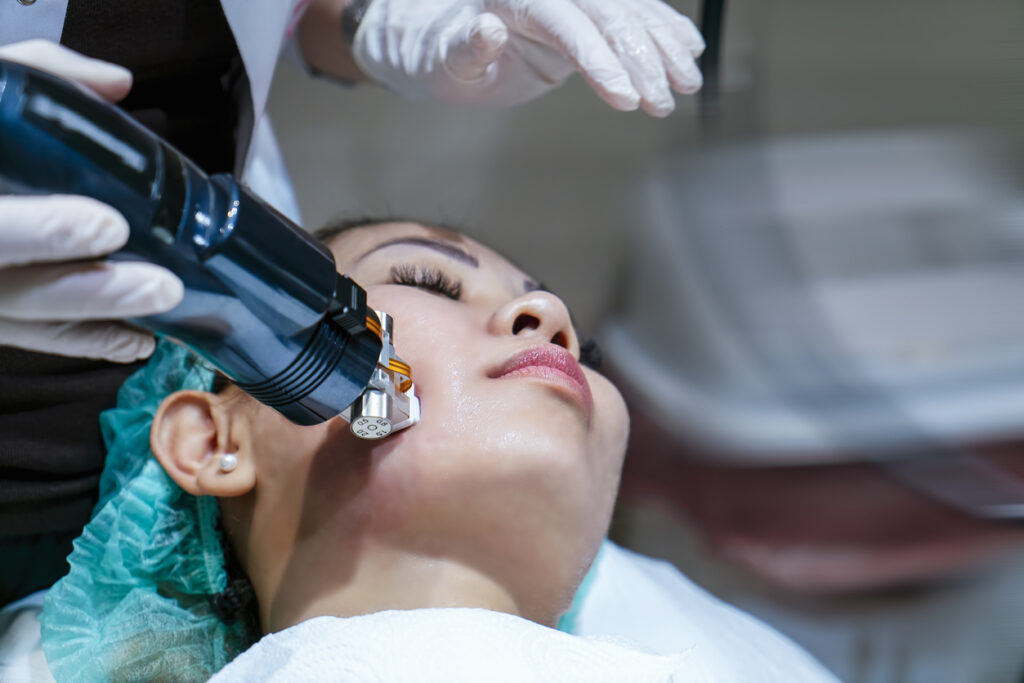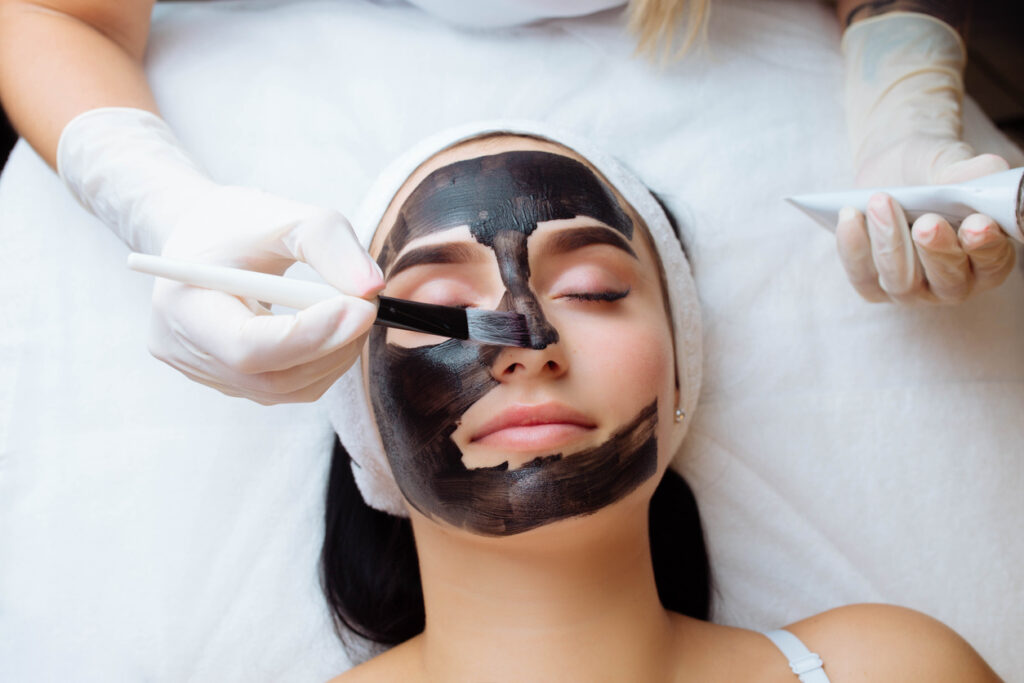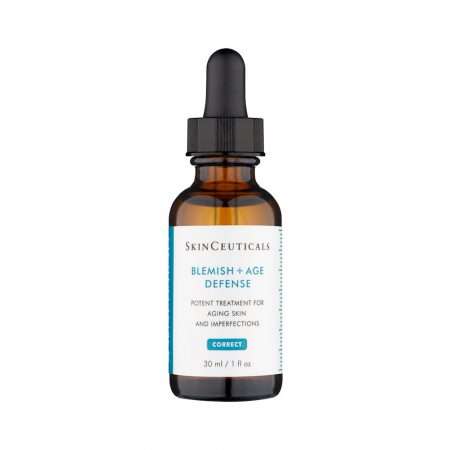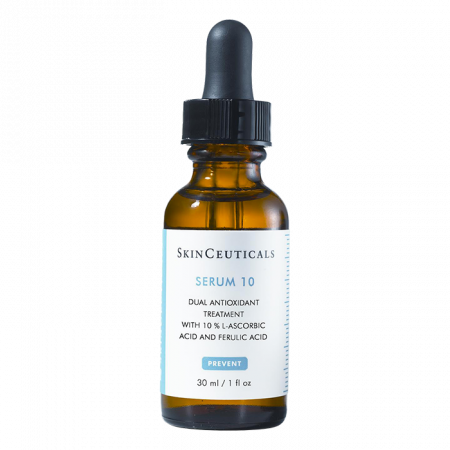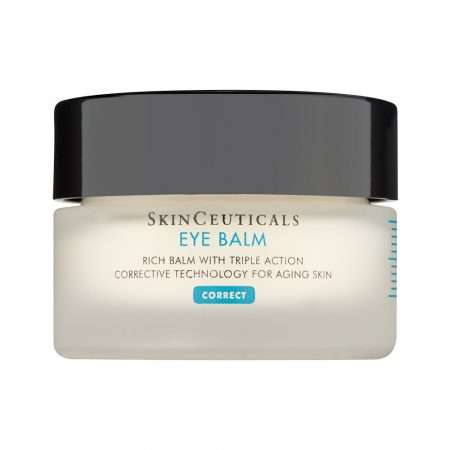How to Get Rid of Acne Scars: Treatments & Skincare Tips

Acne is difficult no matter what age you are when you get it! But what makes it worse is when a blemish leaves behind a noticeable scar. Over time, acne scarring can build up in noticeable ridges and dimples on your skin, getting in the way of a flawless complexion.
Acne scars are best addressed by professional beauty treatments, but there are also a few tips and tricks you can use in your home skincare regimen to reduce them, too. Here’s our guide to the best clinical treatments and at-home skincare products to help you get your glow back.
What Are Acne Scars?
First things first, let’s take a minute to note the difference between acne scars and post-inflammatory hyperpigmentation. Both are marks on the skin that can happen after an acne breakout, so they’re often confused as being the same thing.
Acne scars are healed wounds, which either form indentations or raised scars that can be permanent. Indented scars happen when your skin doesn’t produce enough collagen during the wound-healing process, while raised scars happen when it produces too much.
Post-inflammatory pigmentation, on the other hand, is the inflammation and pigmentation that happens after you get acne blemishes. It’s discoloration (typically red, brown, or purple) that happens after there’s been some trauma to your skin, but it’s not really a scar.
This post will focus on treating acne scars. For pigmentation concerns, see our guide to hyperpigmentation.
Types of Acne Scars
Atrophic scars are indented scars that look like little dimples in your skin, and they happen when there’s not enough collagen for your wounds to heal smoothly. There are three types of atrophic acne scars:
- • boxcar scars — round and wide depressed scars that can be deep or shallow.
- • ice pick scars — narrow V-shaped scars that are usually quite deep.
- • rolling scars — wide, irregularly-shaped indentations caused by bands of scar tissue below the surface of the skin.
Hypertrophic scars are raised bumps of scar tissue that form as a result of too much collagen. Keloid scars are even bigger raised scars that have darker pigmentation than the surrounding skin, and they’re more common for people with darker skin tones.
Can All Acne Scars Be Treated?
Yes, all acne scars can be treated. If not fully removed, the right treatments can at least lessen their appearance. But the process might differ depending on your skin type and the type of acne scars you have.
Atrophic and hypertrophic scars typically respond well to acne scar treatments. Keloid scars on darker skin tones, however, might not respond to the kinds of acne scar treatments that cause trauma to the skin (such as skin peels and microneedling). If in doubt, ask a professional before pursuing treatments.
The Best Clinical Treatments for Acne Scars
Here are the best in-office treatments for getting rid of acne scars:
RF Microneedling
RF (radiofrequency) microneedling is an effective treatment for all kinds of atrophic acne scars. This treatment combines traditional microneedling — in which a handheld needle-roller device is used to create tiny pinprick wounds in your skin to boost collagen production — with radiofrequency energy. The radiofrequency element enhances the benefits of microneedling, penetrating deeper into your skin for better results.
Many studies have been done on skin needling for acne scars, and there is clear scientific evidence that it works. After a series of RF microneedling treatments, you should see a reduction in acne scars. Even better, this treatment is non-invasive and has a minimal recovery time.
If you have more questions about this treatment, check out our full guide to RF microneedling.
Chemical Peel
A chemical peel is a deep exfoliation treatment that can reduce the appearance of all types of scars, even deep scars. They use a chemical solution of exfoliating acids to remove the outer layer of skin and reveal a fresher, smoother layer below.
Depending on the type of scarring that you have, you may be recommended one of the following types of peels:
- • superficial peels — light chemical peels that use AHAs (alpha-hydroxy acids) and BHAs (beta-hydroxy acids) to exfoliate the skin. Best for shallow boxcar scars.
- • medium peels — medium chemical peels that use hydroxy acids or TCA (trichloroacetic acid) to penetrate a little deeper. Can work for superficial and medium-depth acne scarring.
- • deep peels – intense chemical peels that use phenol to penetrate deep into the skin. Good for deeper scars, but will require a longer recovery time.
In-office chemical peels use high concentrations of exfoliating acids not available outside of professional settings. They can remove the outer layer of skin, clear away dead skin cells, and encourage the growth of new collagen — reducing the appearance of even deeper scars. They’re a great way to fade acne scarring and reduce dark spots at the same time.
Laser Treatments
Laser therapy is another great treatment for acne scars. A laser skin resurfacing treatment uses a laser to remove the outermost layer of your skin while also heating up the deeper layers, triggering collagen production. The result is smoother, firmer skin with fewer imperfections — including reduced pigmentation and acne scars.
Laser skin rejuvenation works for pretty much any type of scar, ranging from mild to severe acne scars. Unfortunately, it’s not suitable if you are still experiencing breakouts, nor is it as effective for darker skin tones.
Here at Araya Beauty, we have a great treatment that combines fractional laser therapy with a deeply exfoliating carbon mask: the carbon laser peel. This facial is effective for all kinds of skin concerns — from treating acne symptoms like enlarged pores, oiliness, and blemishes to reducing post-acne concerns like pigmentation and acne scarring. For acne scars, we recommend a series of 2–6 treatments to really see results.
Home Remedies for Acne Scars
To help get rid of your acne scars from home, you should add some skin resurfacing and retexturing ingredients to your skincare regimen. These include:
Azelaic Acid
Azelaic acid is a blemish-busting, skin-brightening ingredient found in many popular acne treatments. It helps slow down melanin production in the skin, which can prevent hyperpigmentation and reduce the appearance of scars.
It also has antibacterial and antioxidant properties that can combat acne blemishes, reduce oiliness, and shrink pores as well. You can find it in over-the-counter creams and gels in strengths up to 10%.
Retinol
Retinol is a powerful ingredient that works to speed up the production of collagen and boost skin cell turnover. It’s a derivative of vitamin A that’s commonly used in anti-aging products, as it’s very effective at reducing fine lines and deep wrinkles. However, it’s also a great ingredient to use if you struggle with acne scars or pigmentation issues, as it helps resurface the skin and smooth skin texture.
Depending on your skin type, retinol may or may not work for you. As a topical treatment, it can be harsh on sensitive skin and it can cause irritation and redness. Most people can adapt to using retinol once they start with a low concentration and only use it once or twice a week at first.
AHAs & BHAs
Hydroxy acids are chemicals that gently exfoliate your skin by loosening the bonds between dead skin cells, allowing them to shed more easily. Regular exfoliation with hydroxy acids can help fade scars and pigmentation for a more even complexion.
If pigmentation and scarring are your main concern, try adding AHAs (alpha hydroxy acids) like glycolic acid, lactic acid, or kojic acid to your skincare routine.
If you still struggle with breakouts and oily skin, try salicylic acid. It’s a BHA (beta-hydroxy acid) with antibacterial properties that can combat active breakouts while also reducing the appearance of scars over time.
Sunscreen
Last but not least, sun protection is key. By wearing SPF, you can help prevent any further pigmentation which will make acne scarring more prominent. Moreover, sun damage also causes the collagen fibers in your skin to break down — which will make scars look deeper and cause wrinkles too!
Apply a broad-spectrum sunscreen with SPF 30 or higher (ideally SPF 50+) to keep your skin safe from further damage.
How Long Does It Take to Get Rid of Acne Scars?
Unfortunately, you won’t be able to get rid of acne scars overnight. The time it takes for acne scars to fade depends on the type and extent of scarring. With in-office treatments, it can take from 3 months to a year to fade acne scars.
With a series of our best RF microneedling treatments, we should be able to get rid of even deep acne scars in approximately 9 months. Discuss your options with our therapists to find out the best treatment plan for you!
The Bottom Line On Blitzing Zits
When it comes to getting rid of acne scarring, cosmetic procedures in a salon are the best way forward. While an at-home skincare regimen can undoubtedly help, the best treatments for acne scarring will use specialist equipment and professional-grade ingredients to get the job done.
The right treatment for you will depend on the type of scar(s) and the depth of the scar(s) that you have. For atrophic (indented, depressed) acne scars, RF Microneedling is one of our most effective treatments that can offer tangible results over the course of 6–9 months.
So if acne scarring is getting you down, there’s no need to struggle with it alone! Contact our team of professionals at Araya Beauty to start an effective and confidence-boosting treatment program today.
